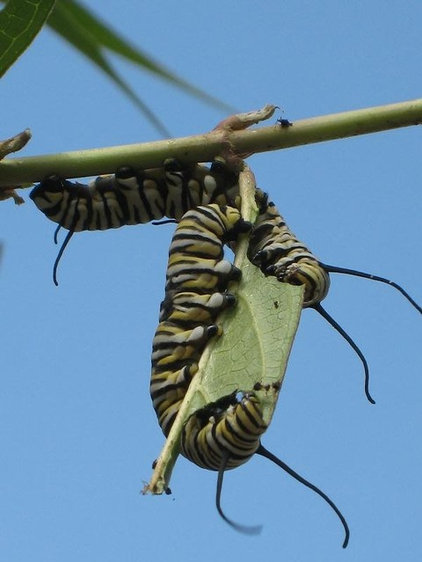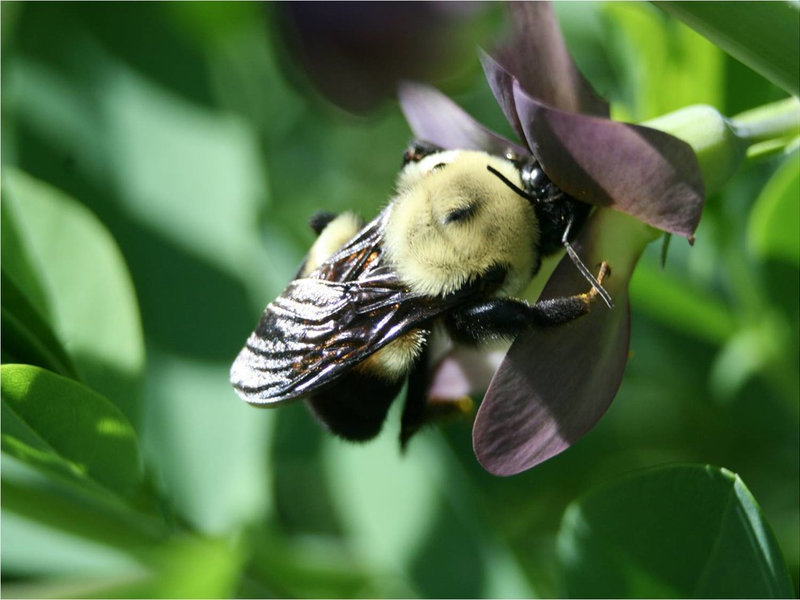Gardening solely by USDA Plant Hardiness may not be the best way to plan your garden, but that realization doesn’t have to cause a lot of grief. Making the right plant choice now will often save time and distress down the road, ensuring the plant thrives in your landscape and does all you dreamed it would when you first read the plant tag. Here’s how gardening without zones will help you in the long run and expand your gardening know-how.
 Paintbox Garden
In 2012 the USDA released a new hardiness zone map revealing that over 50 percent of the U.S. had moved a half zone warmer. This came after years of data showed a warming climate — in fact, these climate zones are moving north at an average of 3⅘ feet per day.
Paintbox Garden
In 2012 the USDA released a new hardiness zone map revealing that over 50 percent of the U.S. had moved a half zone warmer. This came after years of data showed a warming climate — in fact, these climate zones are moving north at an average of 3⅘ feet per day. This poses problems if you’re installing trees and shrubs, as well as many perennials, with long lifespans. Within their lifetime they may have very different soil and light requirements due to shifting climate patterns.
 Adam Woodruff + Associates, Garden Artisans
Consider climate zones instead. The Sunset Climate Zone map is one alternative to USDA hardiness zones. It breaks the country into 45 zones that cover all four seasons so that we can better ensure a thriving plant year-round, not just in winter. (Hardiness zones only look at winter survival.)
Adam Woodruff + Associates, Garden Artisans
Consider climate zones instead. The Sunset Climate Zone map is one alternative to USDA hardiness zones. It breaks the country into 45 zones that cover all four seasons so that we can better ensure a thriving plant year-round, not just in winter. (Hardiness zones only look at winter survival.) The Gainesville Sunset maps consider latitude, elevation, humidity, topographical features like hills and valleys, and microclimates. In other words, the zones are created to match the plant. Unfortunately, not many nursery plant tags use this method.
 jonathan alderson landscape architects, inc.
Use local native plants. Climate zones give you a much better idea of your region and what plants will work. The most bang for your buck comes from growing regionally adapted natives that know your climate and soil.
jonathan alderson landscape architects, inc.
Use local native plants. Climate zones give you a much better idea of your region and what plants will work. The most bang for your buck comes from growing regionally adapted natives that know your climate and soil.Another place to look is the EPA’s ecoregion map; you can then use this in conjunction with native plant lists for your area via the Pollinator Partnership, or search for a specific native plant’s range via BONAP.
It’s key to remember that if you live in zone 6 Massachusetts you shouldn’t be planting a native from zone 6 Oregon because it’s almost certainly not native to you, and almost certainly not adapted to regional or local humidity, elevation, etc.
Discover how and where to find native plants
 Benjamin Vogt / Monarch Gardens
Choose plants to support wildlife. Regionally adapted natives come with another perk — they support local Gainesville wildlife, from insects and their young (like the monarch caterpillars seen here onmilkweed), to birds and frogs and who knows what else. Many pollinators have adapted to know only the taste and fragrance of certain plants, which increase seed yield and quality while providing for the insect’s lifecycle.
Benjamin Vogt / Monarch Gardens
Choose plants to support wildlife. Regionally adapted natives come with another perk — they support local Gainesville wildlife, from insects and their young (like the monarch caterpillars seen here onmilkweed), to birds and frogs and who knows what else. Many pollinators have adapted to know only the taste and fragrance of certain plants, which increase seed yield and quality while providing for the insect’s lifecycle.
 Benjamin Vogt / Monarch Gardens
Look at local plant communities. I’d also suggest looking at local plant preserves or arboretums to see native plant communities in action. This will give you an idea of what plants work well with each other aesthetically and ecologically.
Benjamin Vogt / Monarch Gardens
Look at local plant communities. I’d also suggest looking at local plant preserves or arboretums to see native plant communities in action. This will give you an idea of what plants work well with each other aesthetically and ecologically.Planting diverse natives will encourage a thriving ecosystem that brings in unique beneficial insects like the buzz-pollinating bumble bee (perhaps our best pollinator insect) as well as predator bugs that rid you of pests (think lady bugs vs. aphids and spiders vs. locusts).
 Adam Woodruff + Associates, Garden Artisans
Overall, consider putting a bit more planning into your plant purchases and placement in your Gainesville landscape. I know this planning can take time (you could always hire someone to do it for you), but you, the plants, the wildlife and your budget will have a much happier long-term relationship.
Adam Woodruff + Associates, Garden Artisans
Overall, consider putting a bit more planning into your plant purchases and placement in your Gainesville landscape. I know this planning can take time (you could always hire someone to do it for you), but you, the plants, the wildlife and your budget will have a much happier long-term relationship. When you don’t rely on hardiness zones, you discover what will thrive year-round in your Gianesville garden, what will support local wildlife and what will require much less maintenance down the road. This will also lead to diversity in your plantings, which will better withstand climate change, rainstorms, droughts, diseases and pests. I mean, why would you look at hardiness zones ever again?
